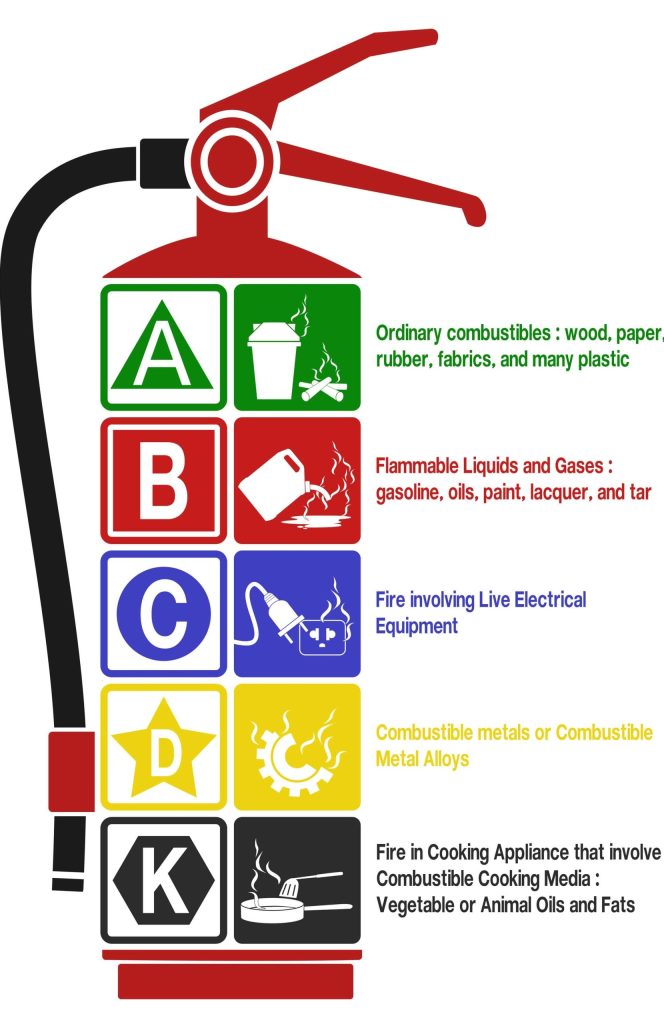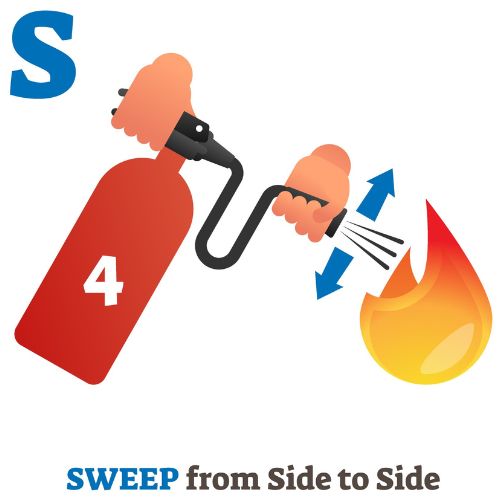Fire Extinguishers – It’s Fight or Flight!
So there was a guy welding on a billboard mounted high above a vacant city lot. The lot had overgrown, leaving piles of dead grass. Plus there was the usual vacant lot stuff, trash, odd pieces of lumber, a broken office chair, you get the picture.
Mr. Welder climbed up the vertical fixed ladder to get himself up to the walkway. He hauled up his welding gear bit by bit, including cylinders of oxygen and acetylene, hoses, the torch, welding rod, and his welding mask. It was cramped up there, but to save the expense of renting a manlift or a boom truck, he did it old school.
Considering the title, you have probably deduced that the sparks from his welding fell to ground and started the dead grass and trash on fire. Right you are! But then what happened? Did he scamper down and put out the fire, did he call 911, or did he just keep on doing what he was doing? Yep, he just kept on welding. Pretty soon the lot was fully on fire, licking at his feet, and the smoke was making it hard to breathe.
It took someone else to call for help. Our friend ended up being evacuated down the long ladder of a ladder truck.
We can break this incident down into increments and do our best Monday morning quarterbacking. He could have cleared the fire hazards first. He could have used a motorized working platform. He could have had a helper on the ground keeping an eye on things. He could have waited for a rainy day. All sorts of possibilities.
But what I’d really like to point out, is how this incident, like any incident where a fire takes hold, is really about doing the first things first.
- Sound the local alarm to those in the vicinity
- Call the fire department, even if you think you can manage the fire
- Choose to fight the fire with portable extinguishers, if and only if:
- You have the right type of extinguisher
- You have been trained in its proper use
- And you can do so without undue risk to yourself or others
- And finally, leave the area when the fire is contained, when you realize it is out of control, or when the fire professionals arrive
Speaking of extinguisher types, how do we choose the right kind? Fire extinguishers are classified by the types of materials that are on fire. They are assigned a class, A, B, C, D, or K.
Class A: combustible wood, paper, trash, coal, etc.
Class B: combustible liquids and fuels, such as gas, diesel, kerosene, etc.
Class C: any fire with an electrical hazard.
Class D: for combustible metals, such as magnesium, lithium.
Class K: for flammable kitchen fuels, such as cooking oil and grease.
Notice that there is no fire extinguisher for flammable gases. In other words, if there’s a propane tank on fire, the best action is immediate evacuation. The agent inside the extinguisher varies based on fire class, and to use the wrong extinguisher can have dire consequences. I’m remembering an instance where a lithium battery factory was on fire and the fire department showed up with hose and sprayed water on it. This resulted in a catastrophic worsening of the fire, because water reacts with lithium to release explosive hydrogen gas.
The two most common agents for fighting class A fires – combustible materials – are dry chemical and water. The way dry chemical works is to create a non-combustible waxy layer on the burning surfaces, thus isolating them from oxygen needed for combustion. Dry chemical is most popular, because it can be used on a wide variety of fires. Be careful, though, dry chemical (classes A-C) and dry powder (class D) are entirely different types of extinguishing media and they are not interchangeable.




Water is common also, especially in sprinklers and fire hoses. While dry chemical is suitable for classes A, B, and C, water is only rated for class A fires. Just imagine what might happen if you sprayed water on a burning electrical system. You could end up standing in an electrified puddle! If you use water of a flammable liquid spill, the burning spill will float on the water and the fire will get larger as the underlying puddle of water expands.
Foam is a water-based media that works on flammable liquid fires by excluding oxygen from the fuel. Consequently, it is not advisable to use foam on an electrical spill.
Now that you’ve got a background on classes of fires and extinguishing media, you are one step closer to actually fighting a fire. Remember that the first step is get people out and notify experts (the fire department, a company brigade, etc.). If, after doing so, you have the right type of extinguisher for the fire, the fire isn’t too dangerous, and you have the training to use the extinguisher, only then do you stand and fight the fire.



